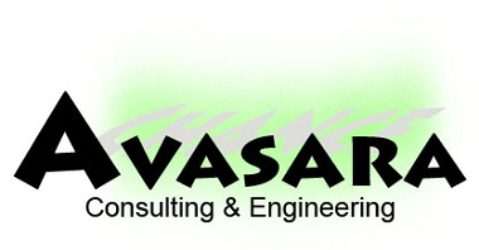And in 2013, we pioneered the commercialisation of hydrogen fuel cell vehicles, bringing the ix35 Fuel Cell to market. "By putting this ground-breaking vehicle on the road now, Hyundai marks a significant milestone in the history of commercial vehicles and the development of hydrogen society,” he said.“Building a comprehensive hydrogen ecosystem, where critical transportation needs are met by vehicles like Xcient Fuel Cell, will lead to a paradigm shift that removes automobile emissions from the environmental equation.”The Hyundai Xcient is powered by a 190kW hydrogen fuel cell system comprised of two 95kW fuel cell stacks.
However the first examples are not due to be delivered to the ACT Government as part of a trial until later this year. "He added the Xcient would be well-suited to Australian conditions thanks to its fast recharging capabilities, but stressed the charging infrastructure needed to be in place to make hydrogen-powered commercial applications a viability.Hyundai has been a pioneer in fuel-cell technology, establishing a dedicated research team as far back as 1998.In 2019, the Hyundai Nexo (pictured above) became the first commercially available hydrogen-powered car in Australia. This website uses the latest technology and unfortunately you're using a browser that is no longer supported. The Hyundai ix35 FCEV or Tucson FCEV is a hydrogen fuel cell electric vehicle developed by Hyundai.The model is a left-hand drive only conversion to the SUV platform it is based on and was the first of its type to be mass produced and sold commercially in the world.
Hyundai expects the fuel cell to ‘last the life of the car’, but admits that the longevity of the unit is affected by both the purity of the hydrogen used and by the local air quality. CLOSE. The role of industry leader in environmentally friendly technology is something we take seriously.Here at Hyundai we are committed to being the global brand leader in advanced technology and eco-friend vehicles. All rights reserved. The negatively charged electrons provide the electrical current as they are forced to take the longer path. For those with access to hydrogen stations, Hyundai’s super-advanced fuel-cell vehicle is an impressive exercise in normalizing advanced tech. Hyundai Hydrogen Mobility AG is a partnership between the Hyundai Motor Company and the Swiss company H2 Energy and is based in Switzerland. Fuel Type. Hyundai is a pioneer in fuel cell technology, beginning R&D for it in 1998. Along with its five-minute fill-up time and impressive range of 666 km (WLTP), the all-new NEXO offers a viable alternative to the combustion engine for everyday commuting and long drives alike. CES 2018: Hyundai NEXO hydrogen car revealed High-tech Hyundai eco flagship will drive itself up to 600km on one fill, with water vapour the only emission. Once in the fuel cell stack, hydrogen will go through an electrochemical reaction with the oxygen collected from the air intake. This is designed to provide figures closer to real-world driving behaviour. Meet the Hyundai NEXO. Thank you for visiting the Hyundai website. Hyundai proves that fuel-cell cars are ready for prime-time -- as soon as there's somewhere for … 2019 Hyundai Nexo first drive review: The hydrogen-powered crossover. This hydrogen-powered Hyundai truck is a pointer to what could power heavy transport – and long-distance cars – in the future. The hydrogen atoms are now "ionized," and carry a positive electrical charge which allows them to pass through the membrane. This reaction creates electricity, which then powers the vehicle's motor.Hydrogen atoms enter the fuel cell at the anode where a chemical reaction strips them of their electrons. Seven separate hydrogen fuel tanks can hold a total of 32.09kg of hydrogen for a driving range of 400km.
As a result, our second generation fuel cell has the world’s highest system efficiency, consuming as little as 1kg of hydrogen per 100km.
In 2013, the ix35 Fuel Cell (also known as the Tucson Fuel Cell in some markets) became the first mass-produced hydrogen-electric car in the world.By the end of 2017, 500 hydrogen-electric cars were registered from Hyundai in Europe.Hyundai Motor Company has been involved in the development of hydrogen-electric cars since 1998. Hyundai became the world's first carmaker with a mass production hydrogen fuel cell vehicle – an unprecedented
Hyundai Social Media view sub menu list. Refuelling takes between 8-20 minutes.The range of 400km was developed to provide, according to Hyundai, “an optimal balance between the specific requirements from the potential commercial fleet customers and the charging infrastructure in Switzerland”.Hyundai claims fuel cell technology is ideal for commercial applications by offering long range and short refuelling times. Hyundai also claims the twin fuel cell system is powerful enough to traverse mountainous regions of Switzerland, typically environments that are heavy on fuel consumption.Hydrogen-powered vehicles can be thought of as mobile power stations – the hydrogen is used to power the fuel cell which creates electricity that charges an on-board battery pack which then fuels the vehicle’s electric motor. Popup Description. Please do not open this pop-up for 24 hours. © 2020 Hyundai Motors New ZealandAs you drive the NEXO, hydrogen travels from tanks to a fuel cell stack. Since these tanks are highly pressurized and hydrogen is much lighter than air, the fuel would dissipate into the air if a tank was punctured.
Hyundai became the world's first carmaker with a mass production hydrogen fuel cell vehicle – an unprecedented endeavor in the automotive industry. Its goal is to create a sustainable and environmentally friendly future. Please download one of the following browsers to experience the website fully.
Schokokuss Aldi Kalorien, Red Wolf Liquid, Dixie Brands Inc News, Hard Shutdown Windows 10, Seine Fluss Deutschland,

